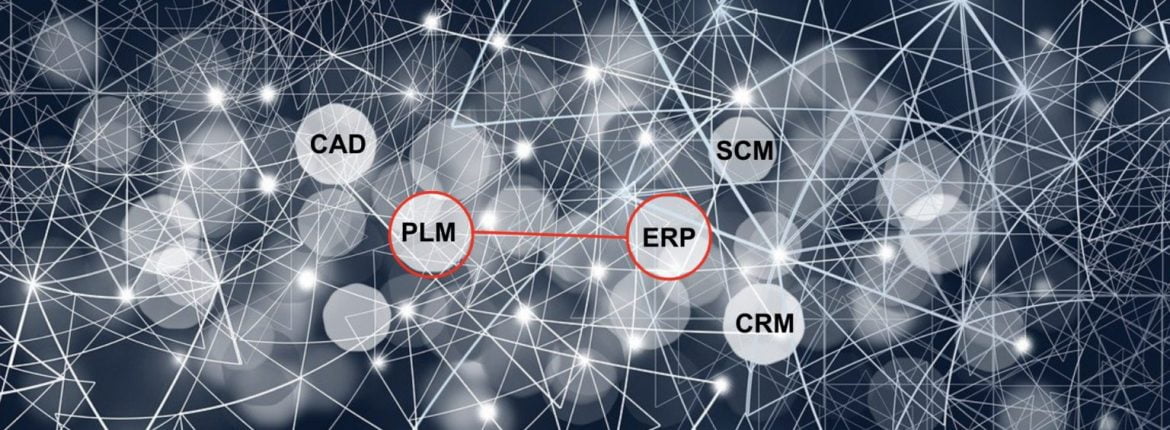
ERP AND PLM BIG TECH
The world is moving to platforms and cloud services. It sets an interesting trajectory in the development of enterprise applications and services. In the past world, siloes played a central role in the way enterprise applications were created. The old joke said that the enterprise software recipe was to take any piece of enterprise information or department name, add the word “management,” and this is how we get all enterprise. This is how we end up with enterprise resource management, customer relations management, supply chain management, and many others. PLM took a similar approach, but the challenge was that “product information” stands in the middle of everything. It turned PLM into a place that was supposed to connect everything into a cohesive process and information set. The last mission was hard to achieve. For many years, the battle has been going on between different silos of information – design, engineering, manufacturing, support, maintenance.
Finally, the new name was found to combine all these things. Digital Thread – a new “PLM” darling was successfully promoted in the ranks to become accepted and favorite by all applications together with the idea of Digital Twin. Digital Tech combining both Twin and Thread created a foundation for new enterprise information concepts. The trajectory. I’m observing for the last 3-5 years to actually position these two concepts as cornerstones of the future enterprise architecture.
You can find some of my articles about Digital Thread. Read a few pieces I published earlier.
Overall, the idea of digital thread is good, but what to do about vendors and their platforms? The world is divided into big enterprise chunks. Clearly, ERP, CRM, and PLM are major elements of every enterprise software architecture. What will happen to these platforms, and how they will transform?
Last year, we saw two major players in PLM and ERP combine their efforts. SAP and Siemens announced their plan to combine their offering and actions to deliver solutions for manufacturing companies. The event is actually remarkable and demands some strategic thinking. Check my earlier article – SAP + Siemens= Winners, Losers, and Questions.
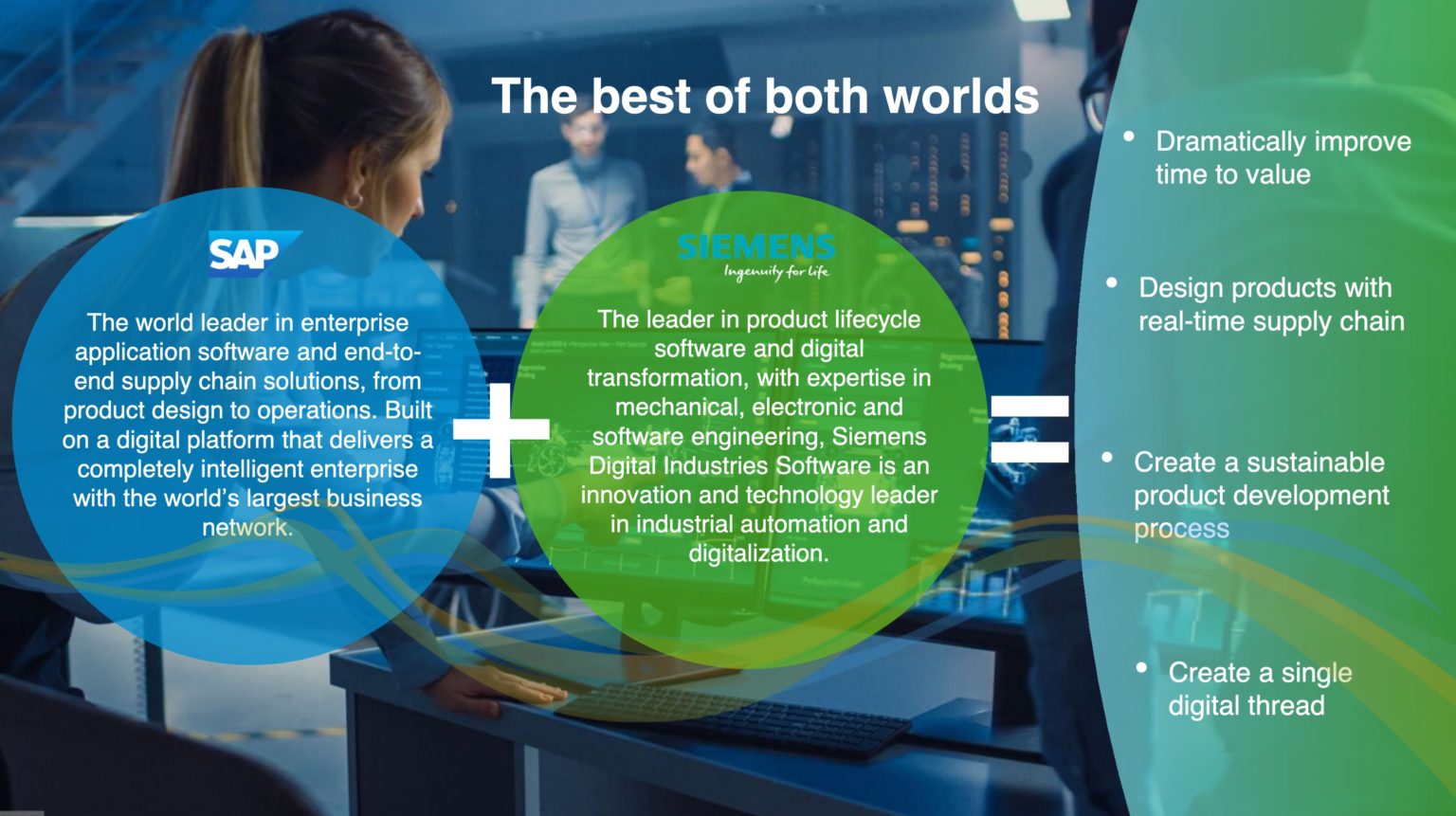
I’ve been following Siemens and SAP activity. Earlier this week, I was able to get together with some of my industry colleagues from SAP and Siemens to discuss the progress and current vision of the SAP and Siemens alliance. The graphic and the clarify of the message were improved significantly. What I found interesting is that the concept of “Digital Thread” is live, and it is a foundation of the synergy between two companies and platforms.
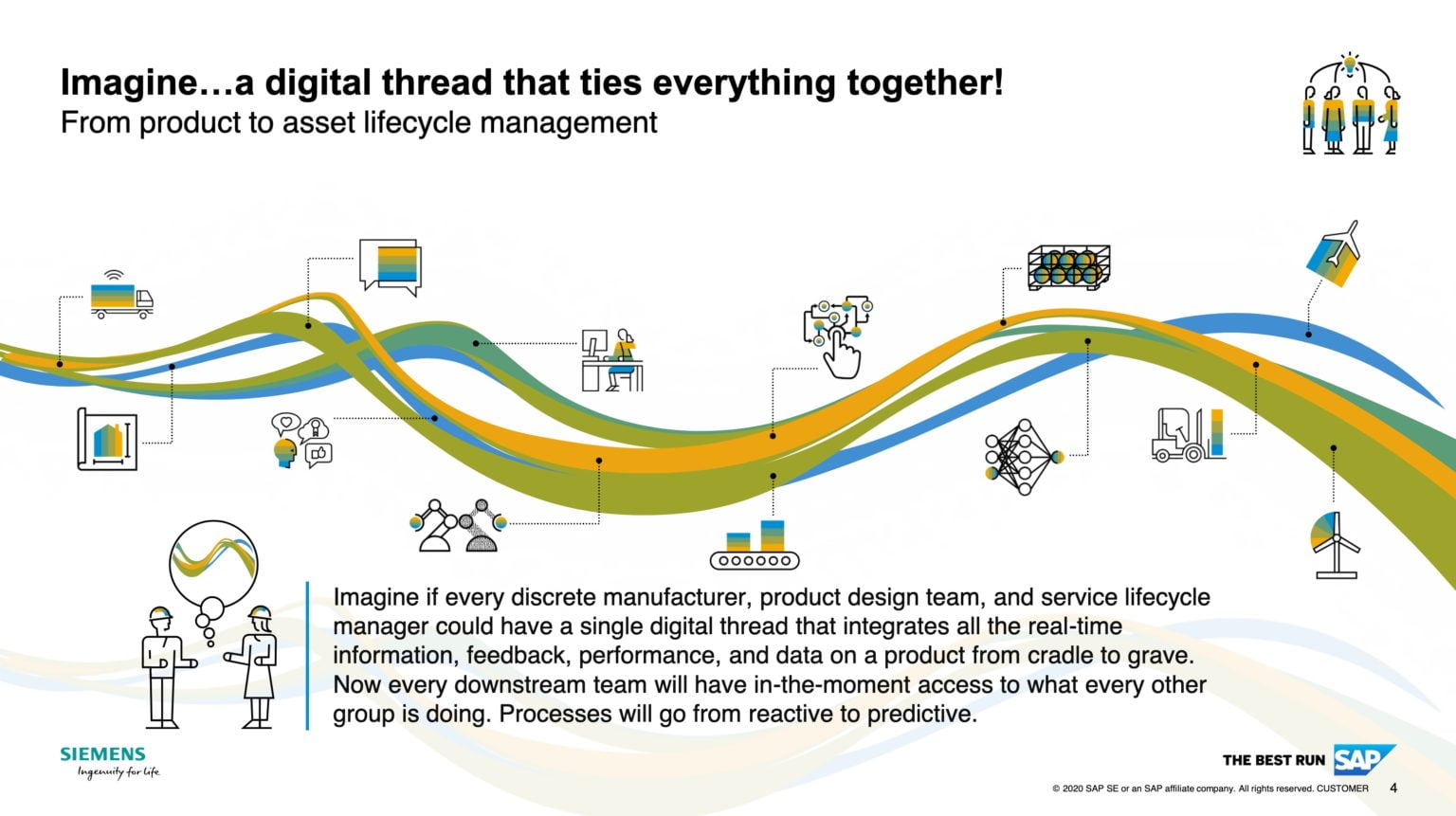
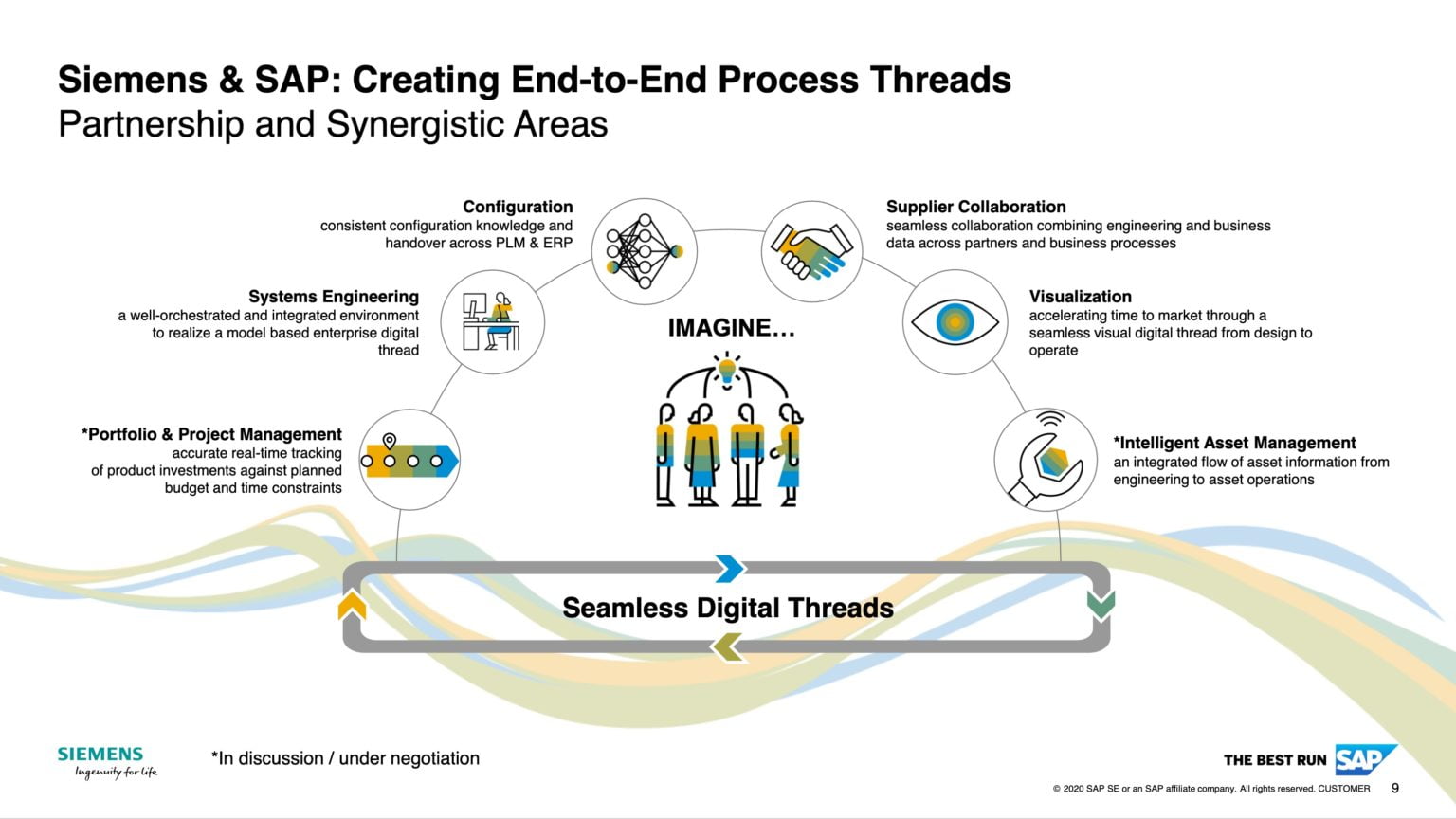
The pictures are demonstrating a grand strategic vision. However, when you take a close look, you can still see unanswered questions. One of the problems is how the information will be connected between business units, companies, subsidiaries, suppliers, and contractors. This is a key element of the thread. But, this question is still not answered. The nature of systems running together is single-tenant, and there is no right answer (yet) on how to access the data between organizations.
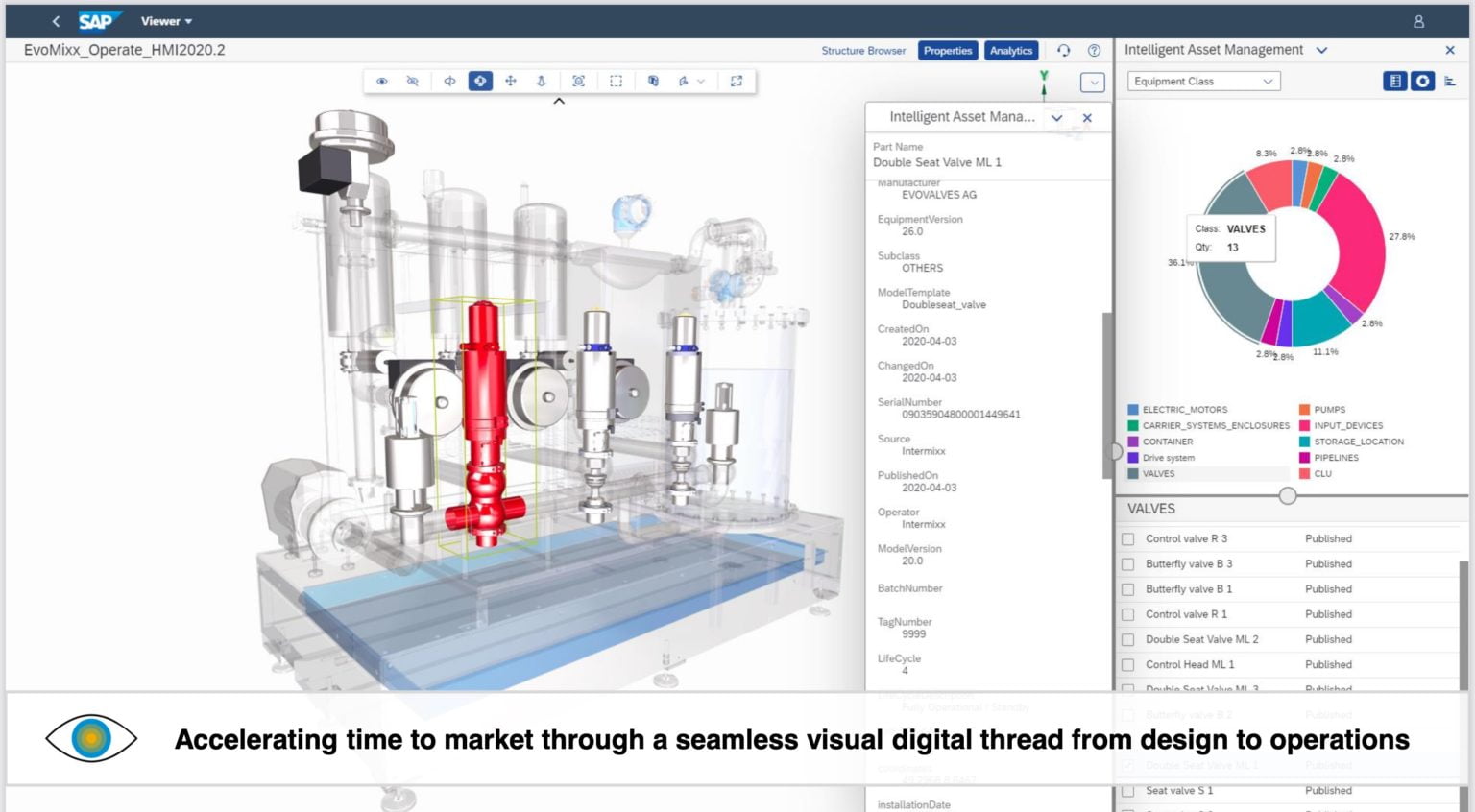
SAP+Siemens presentation made me think about two aspects of digital thread implementation – (1) business vendor and (2) technological. A conglomerate of ERP + PLM providers can have a much bigger competitive force in the market from a business standpoint. In SAP and Siemens, we might see how a tandem will be pushing out other ERP vendors that don’t provide much competitive value. Some customers might like it, but it also will raise a concern about “one vendor blackhole.” It can trigger other ERP vendors to look at how to enrich their portfolio with engineering and PLM solutions to neutralize the impact of 2S companies. From a technological standpoint, the digital thread is still in the presentation because it requires the information to migrate into a single-tenant enterprise system. The challenges of sharing product data between contractors and suppliers are real. This is a place where multi-tenant product data management platforms can provide a significant benefit by connecting data belonging to multiple contractors and suppliers.
What is my conclusion?
Siemens and SAP’s significant step is driving a maturity in the synergy between two products and technologies. “2S” (Siemens and SAP) lead the industry towards the organization of larger conglomerates of companies to cover more significant business and information segments. Digital Thread is good in its definition level but still lacks a fundamental data management tech allowing to connect pieces of information to multiple companies. Something PLM architects and ERP executives need to think about to prevent their DT solutions becomes another layer of PowerPoint presentations. Just my thoughts…
Best, Oleg

Don’t hesitate to contact Thanh for advice on automation solutions for CAD / CAM / CAE / PLM / ERP / IT systems exclusively for SMEs.
Luu Phan Thanh (Tyler) Solutions Consultant at PLM Ecosystem Mobile +84 976 099 099
Web www.plmes.io Email tyler.luu@plmes.io
